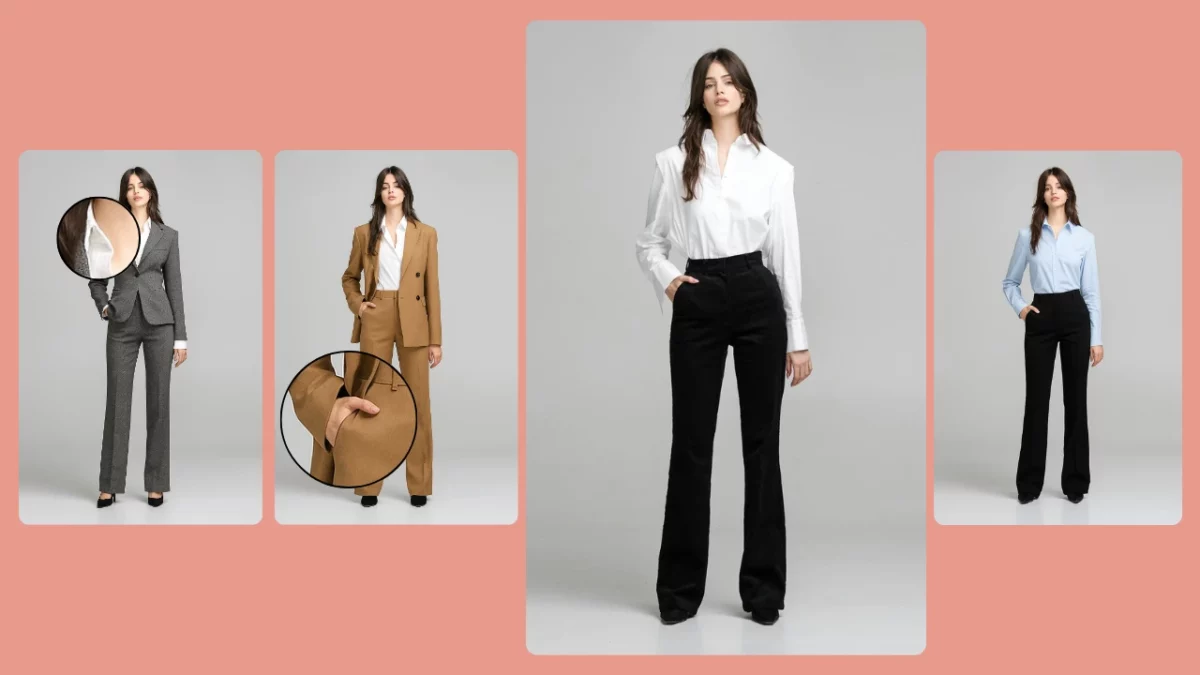1. The Evolution of Digital Styling
In today’s fast-paced visual economy, businesses and creators are turning to AI clothes changer solutions to streamline how apparel and fashion visuals are produced. This technology enables users to digitally alter clothing in photos without the need for additional photoshoots or wardrobe changes. Whether it’s for ecommerce product listings, social media campaigns, or marketing materials, virtual outfit swapping powered by AI is redefining how content is created.
The demand for rapid, cost-efficient outfit changes is rising across industries. Fashion retailers want to showcase one model in multiple product variants. Marketing teams need dynamic visuals that adapt to seasonal trends. Photographers and content creators seek tools that save production time while maintaining quality. Traditional methods often require multiple photoshoots, stylists, physical clothing options, and studio coordination—costly and time-intensive elements for any brand or freelancer.
This is where PiktID enters the picture. With a suite of AI-driven tools designed for advanced facial and visual manipulation, the platform offers a practical path forward. Though primarily known for facial editing and identity generation, PiktID’s upcoming AI-based styling tools aim to make virtual wardrobe changes as seamless and accessible as background editing or face retouching.
By integrating intelligent design with user-friendly access points—like web apps and APIs—PiktID empowers users to reimagine styling workflows. The promise of virtual outfit transformation is no longer a futuristic concept; it’s a practical upgrade for today’s digital creators.
2. The Traditional Challenge: Outfit Changes in Photography
Outfit changes have always been a time-consuming and expensive part of professional photography, especially for fashion retailers, ecommerce brands, and digital catalog production. While innovation in AI imaging has streamlined many post-production tasks, changing clothes on a model still largely relies on physical reshoots or extensive manual editing. This is where the AI clothes changer becomes a disruptive solution to longstanding production bottlenecks.
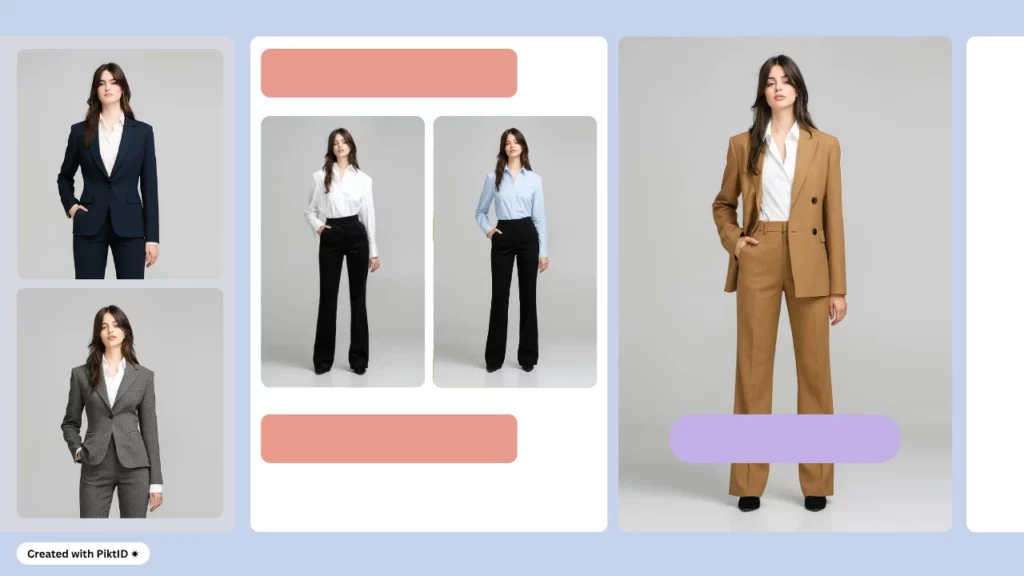
High Costs
Photographing a model in various outfits often requires a full-day shoot — or even several days — depending on the number of SKUs. Costs typically include:
- Studio rental and lighting equipment
- Professional photographers and stylists
- Makeup artists and support crew
- Model day-rates for each new look
- Post-production retouching
For ecommerce platforms managing hundreds or thousands of products, these expenses scale rapidly. The need to shoot each outfit on a model can lead to ballooning budgets, particularly for brands operating across multiple regions or markets.
Time-Consuming Logistics
Coordinating outfit changes is more than just switching garments. Every wardrobe change introduces production downtime and requires re-styling, posing adjustments, and often new lighting configurations. Brands must also account for:
- Ironing and prepping every new piece
- Ensuring each fit looks tailored and polished
- Shooting alternate angles or poses for product listings
Even minor disruptions in this process can delay campaigns, especially in fast fashion where speed-to-market is critical.
Inconsistency Risks
Each time an outfit is changed, there’s a risk of losing visual consistency:
- Lighting may shift due to time-of-day or equipment reset
- Models might become tired, affecting posture or facial expression
- Unexpected wardrobe malfunctions can force re-shoots
These inconsistencies can impact brand aesthetics, especially when producing look-books or carousel product displays where uniformity matters. Just like PiktID’s Insert Face (Swap), similarly an AI clothes changer helps solve these problems by generating realistic clothing swaps digitally, allowing brands to maintain control over visual quality without relying on repeated physical sessions.
3. Why Editing Clothes with Traditional Software Is Difficult
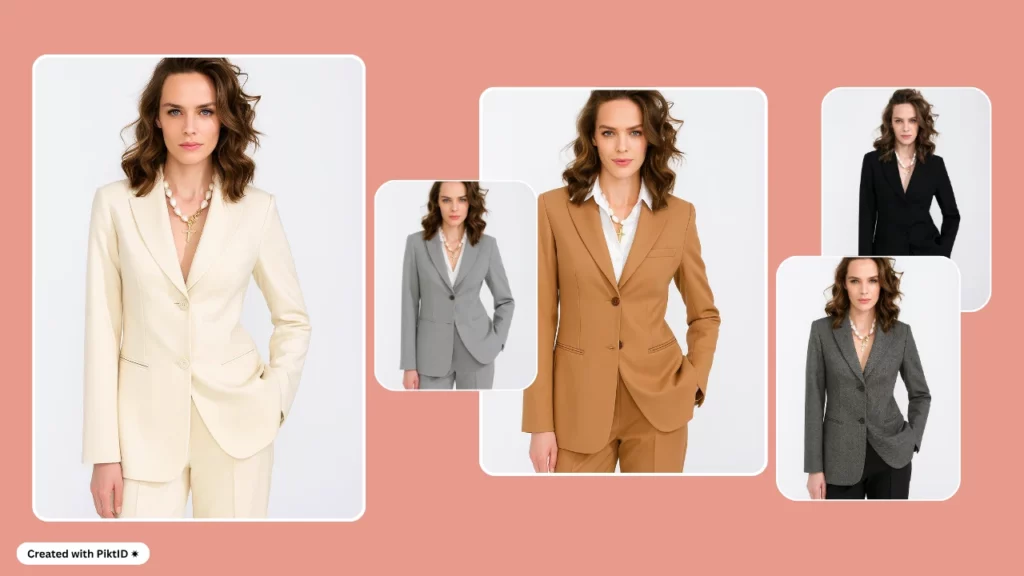
When compared to automated tools like an AI clothes changer, editing clothing manually with software such as Photoshop or GIMP is often a frustrating and time-consuming experience. While these tools offer granular control, they demand a high level of expertise, especially when the goal is to change or replace clothing without compromising the realism of the final image.
One of the biggest challenges is the manual masking process. Isolating clothing from the body requires pixel-level precision, and even a slight error can create harsh edges, unnatural overlaps, or visual artifacts. Editors often find themselves spending hours just defining the selection, especially when dealing with layered outfits, accessories, or loose garments.
Another issue lies in time consumption. Changing clothes on a single photo isn’t just about switching colors or overlaying a new image. It involves adjusting shadows, highlights, and fabric textures—all of which vary depending on lighting and pose. Complex materials like silk, leather, or denim introduce additional complications due to their distinct reflective properties and folds.
Even for seasoned designers, achieving realism is a major hurdle. Clothing doesn’t simply sit on a person; it drapes, stretches, and creases. Reproducing these dynamics accurately with traditional software can take hours of trial and error, often with underwhelming results. The final outcome may still lack the subtle details that make an image believable.
By contrast, an AI clothes changer eliminates these bottlenecks. It automates the selection, lighting adjustment, and fabric simulation, producing natural-looking results in seconds. This makes it a compelling choice for creators, marketers, and e-commerce teams who need scalable and high-quality garment edits without the learning curve of traditional design tools.
Additional Guide: AI Image Extender: The Best way to Enhance Photos
4. The Simplest AI Clothes Changer Solution
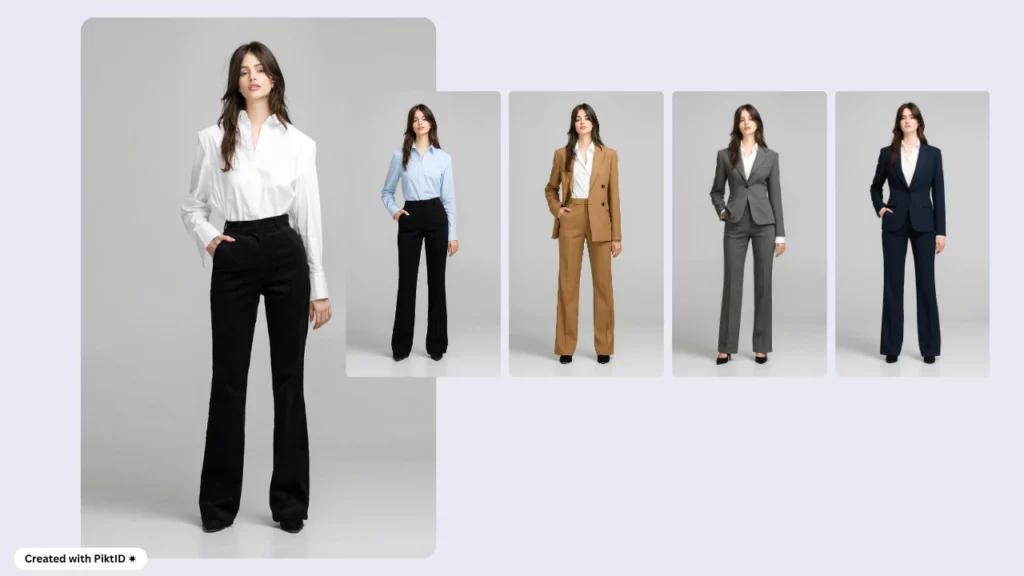
The rise of the AI clothes changer has transformed how brands, creators, and e-commerce platforms visualize fashion without physical inventory or photo-shoots. At the forefront of this shift is PiktID, offering an intuitive and powerful clothes-swapping solution that requires no design skills, no manual editing, and no technical experience.
PiktID’s AI clothes changer is built for speed and realism. Users can upload any photo and swap the subject’s outfit with a completely new one in just seconds. The system maintains the original face, body posture, and background for a highly consistent and professional result. Whether you’re a content creator testing outfit variations, a marketer producing campaign visuals, or a fashion store building product galleries, PiktID offers an efficient way to iterate quickly and cost-effectively.
Additional Guide: AI models fashion anonymization
Key features include:
- Instant Clothes Replacement: Upload and transform clothing in seconds.
- Natural-Looking Results: Faces, poses, and environments remain untouched.
- No Design Tools Needed: Skip complex photo editors or costly photoshoots.
- Multi-Industry Utility: Ideal for influencer portfolios, virtual try-ons, lookbook creation, and more.
PiktID’s web-based solution is accessible from any browser, and the entire workflow—from image upload to AI generation and final download—takes under a minute. For businesses that rely on visual content, this AI clothes changer can drastically reduce production costs and accelerate time-to-market without sacrificing quality.
Additional Guide: AI product background generator
5. How the AI Clothes Changer Works: Step-by-Step
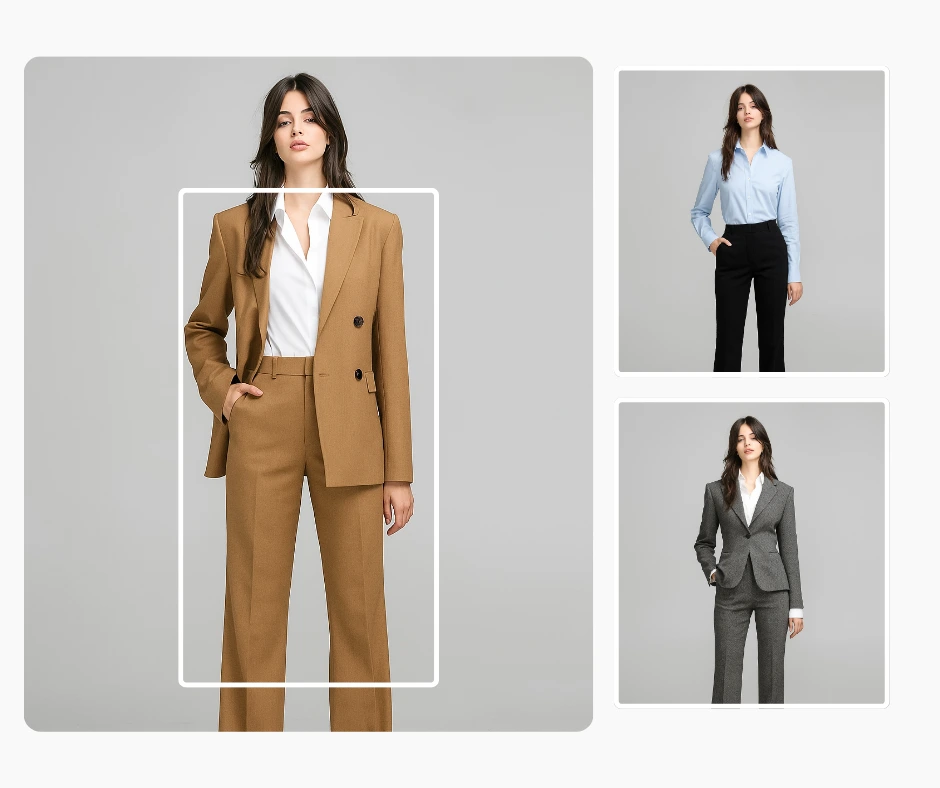
PiktID’s AI clothes changer is designed for simplicity and speed. Its clean interface allows users to create high-quality visual transformations in just a few steps—no learning curve required. Here’s how it works:
Step 1: Upload Your Image
Start by uploading a photo to PiktID Studio. The platform supports standard formats like JPEG and PNG. Choose an image where the subject is clearly visible, as this helps the AI detect posture and clothing zones.
Step 2: Describe the New Outfit
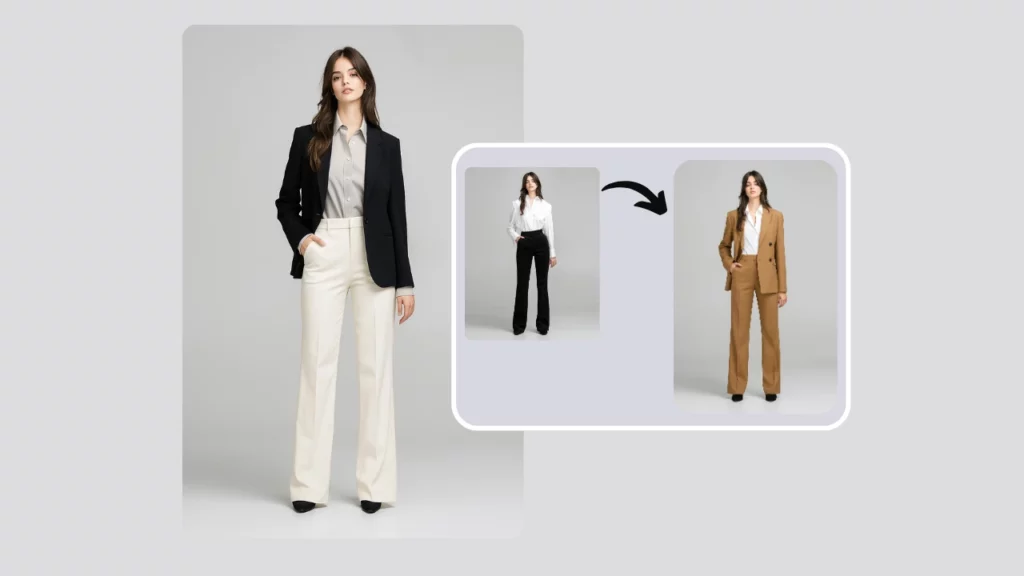
Type a prompt into the clothing description box using everyday language. Examples include:
- “Red hoodie with black jeans”
- “White blouse with a pleated skirt”
- “Formal navy blue blazer and chinos”
The AI clothes changer uses these prompts to generate matching outfits on the original subject.
Step 3: Generate the Image
Click Generate. The AI takes over, analyzing the subject and rendering the new clothing realistically over the original body, while keeping the person’s face, hands, and posture untouched.
Step 4: Download and Use
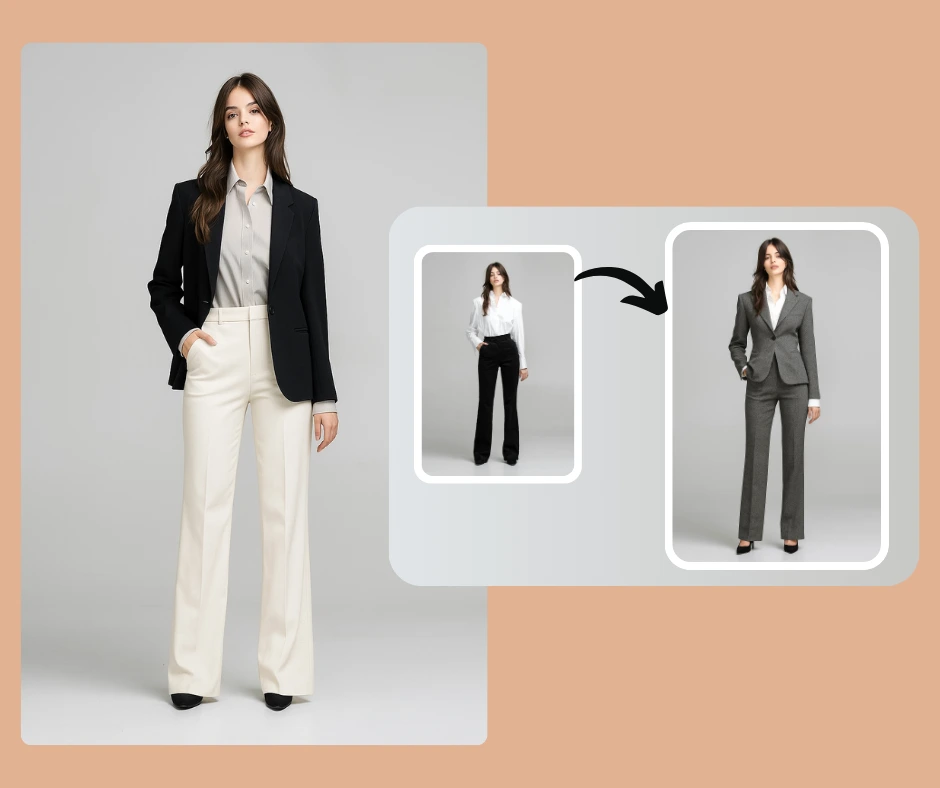
Once complete, the image is ready for download in high quality. You can instantly use it across product listings, marketing visuals, portfolio sites, or social channels.
By reducing the process to these four steps, PiktID makes professional-grade outfit visualization accessible to anyone—empowering creators to bring fashion ideas to life at scale with just one tool.
6. Real-World Use Cases for AI Clothes Changer
The rise of the AI clothes changer has introduced a faster, more cost-effective way to generate wardrobe variations without reshooting entire collections. From fashion retailers to influencers, this technology is transforming how digital content is produced and personalized.
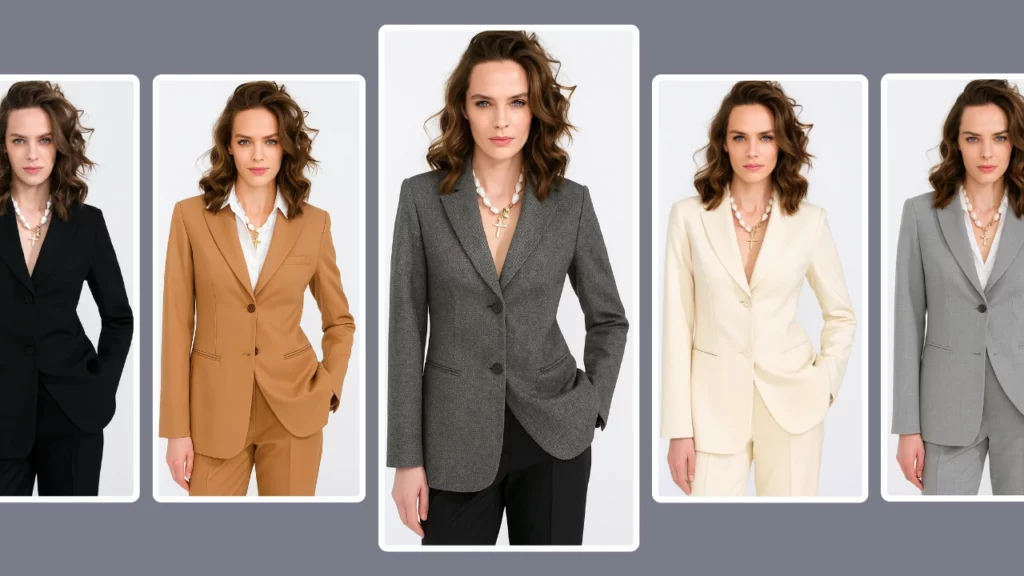
i. E-commerce Product Visualization
Online stores can now showcase multiple clothing combinations using a single base image. Instead of organizing expensive photo-shoots for every product variation, brands can dynamically render different tops, pants, or accessories on one model. This enables richer product pages and boosts conversion rates.
ii. Fashion Campaigns & Marketing
Fashion marketers can preview seasonal collections virtually. Before committing to physical prototypes or photography, creative teams can simulate dozens of looks using the AI clothes changer. It cuts down production cycles and helps brands test audience reactions to different designs or colorways.
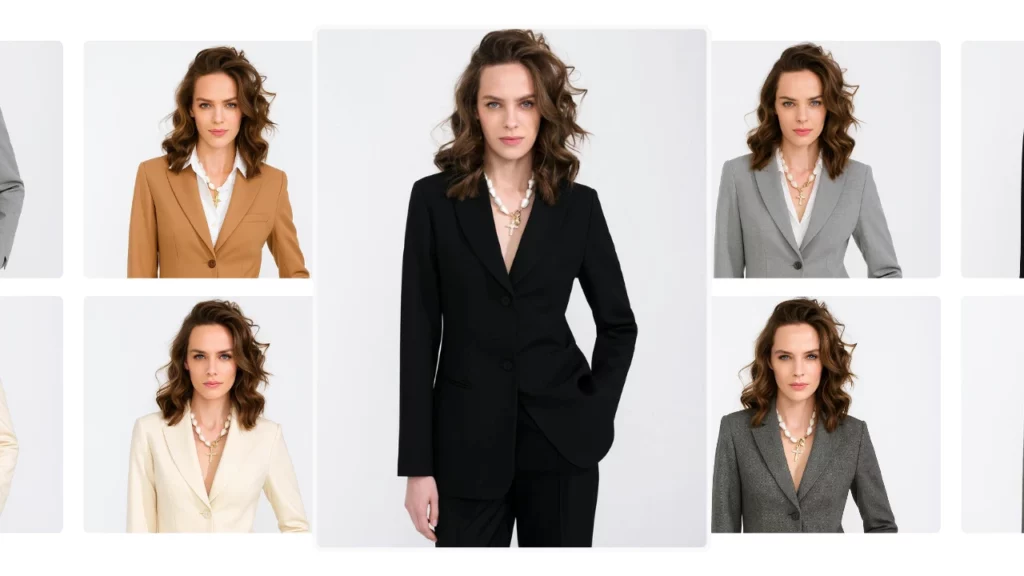
iii. Social Media Styling for Creators
Influencers and digital creators can rapidly try on different outfits and publish content that aligns with trends—without physically owning every look. This is especially useful for those reviewing styles, showcasing daily fits, or collaborating with fashion brands.
iv. Personalized Virtual Try-On
Online shoppers can apply their style preferences onto model images. By adjusting tops, jackets, or dresses, they visualize how clothing might look on someone similar to them. The AI clothes changer enhances engagement and reduces return rates by setting realistic expectations.
v. Creative Portfolio Expansion
Photographers, stylists, and designers can build diverse portfolios with minimal effort. From a single shoot, they can showcase different looks, moods, or brand directions—ideal for pitching new clients or filling out creative reels.
This versatility makes the AI clothes changer a foundational tool for anyone working in digital fashion, content creation, or e-commerce.
Read more: AI models fashion facial expression changer
7. Why Choose PiktID Over Other Options?
PiktID’s AI clothes changer stands out as a highly efficient, secure, and user-friendly tool in a crowded space of digital outfit editing. Whether you’re a content creator, fashion brand, or just experimenting for fun, the platform delivers unmatched speed and realism.
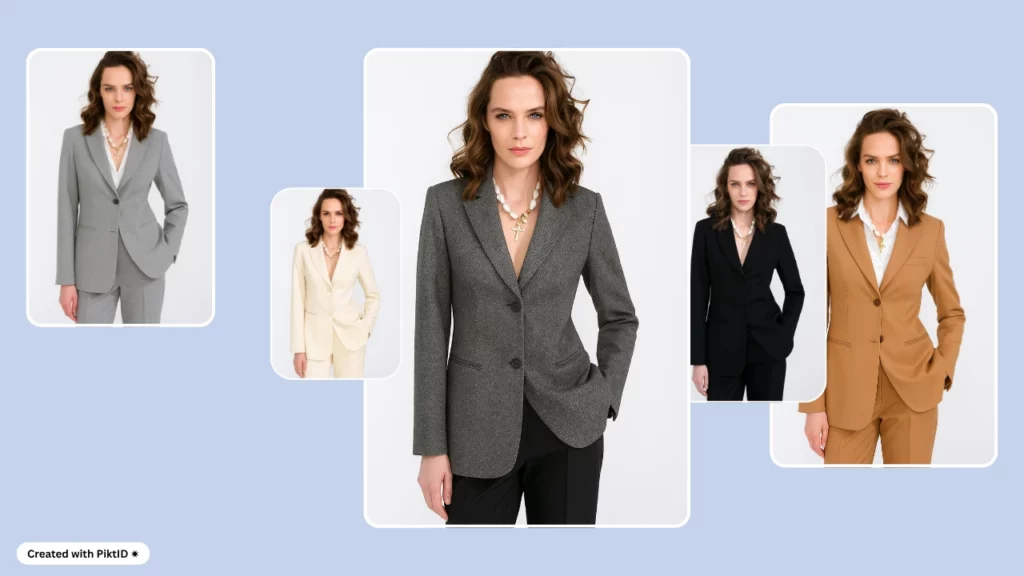
i. Speed:
With PiktID, you can change clothing in seconds—not hours. Traditional editing tools require manual masking, layering, and adjustment, often taking skilled designers upwards of 30 minutes per image. In contrast, PiktID’s AI clothes changer leverages deep learning to produce high-quality results almost instantly. This allows you to generate multiple outfit variations in a single session, making A/B testing or fashion prototyping dramatically faster.
ii. Accuracy:
What truly sets PiktID apart is its intelligent handling of lighting, fabric textures, and perspective. The AI clothes changer doesn’t just overlay garments—it understands how clothes should fit and flow, even on diverse body types or in challenging lighting conditions. Complex patterns, reflective surfaces, and layered garments are processed with impressive precision.
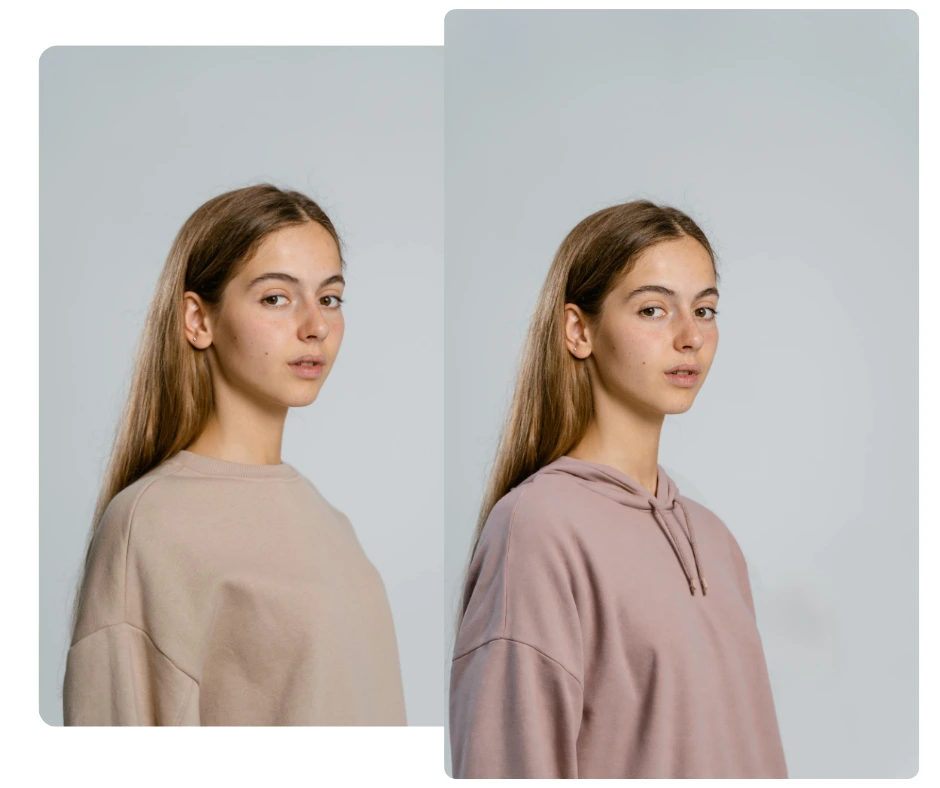
iii. Privacy-First Approach:
Your photos are never stored or reused. PiktID adheres strictly to GDPR-compliant standards, meaning all transformations happen in-session, with automatic deletion of uploaded content. This makes it ideal for both personal and professional use.
iv. Fully Web-Based:
There’s no need to install any software or download heavy files. The AI clothes changer runs entirely in your browser. Just upload your image, pick the style, and let the AI do the rest.
v. Free Credits to Start:
To make the experience risk-free, every user gets 10 free credits at signup. This means you can test the platform and preview outfit transformations before committing.
8. Simplify Outfit Changes with AI
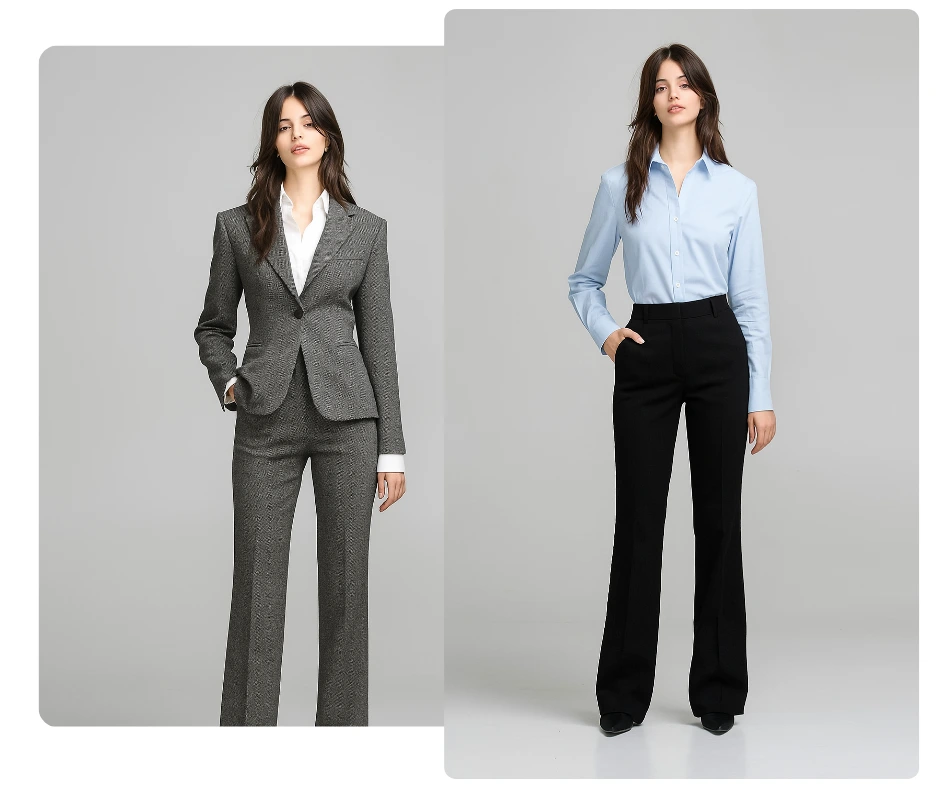
The future of digital fashion and content creation is becoming faster, smarter, and more intuitive—and PiktID’s AI clothes changer is a prime example of this transformation. By eliminating the need for manual editing and giving users the ability to test outfit ideas instantly, it bridges the gap between creativity and efficiency.
Whether you’re designing looks for a photoshoot, curating e-commerce product visuals, or refreshing social media profiles, the AI clothes changer simplifies what was once a time-consuming task. It empowers you to visualize changes in real-time, iterate quickly, and produce high-impact visuals without needing professional photo-editing skills.
Now, anyone can experiment with outfit variations and bring fashion concepts to life with just a few clicks. If you’re ready to upgrade your workflow and save hours of manual editing, it’s time to give the AI clothes changer a try.
Start now with 10 free credits and see how effortless digital styling can be.
9. Try PiktID’s AI Clothes Changer Today
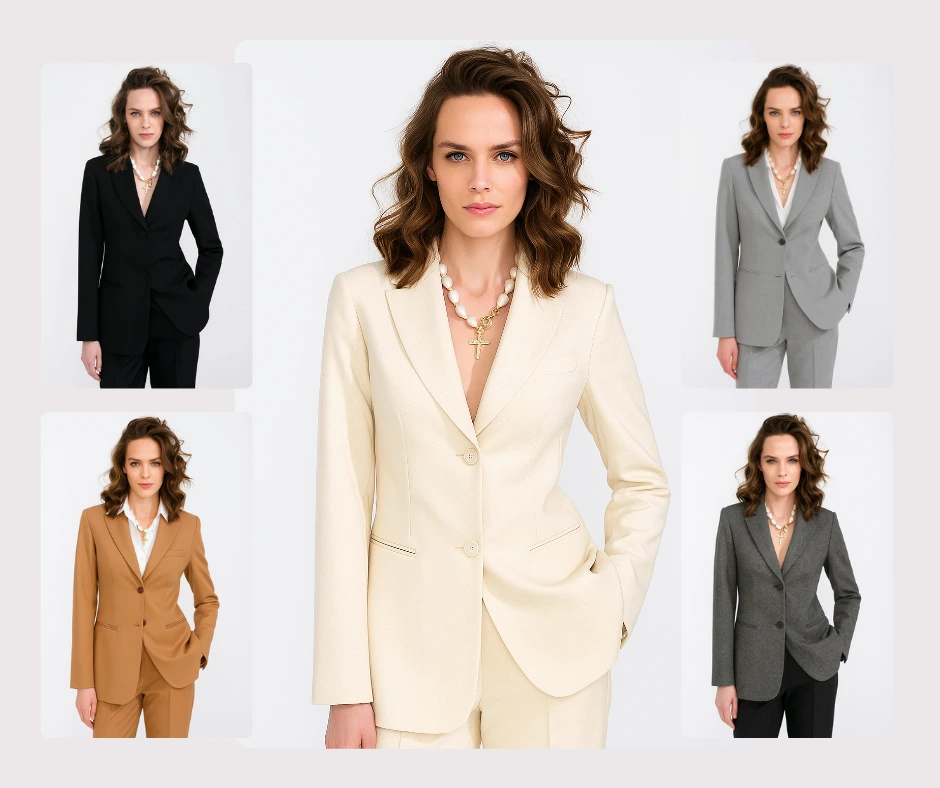
If you’ve been searching for an AI clothes changer that delivers fast, realistic, and customizable wardrobe edits, PiktID is the tool you’ve been waiting for. Whether you’re in fashion retail, content creation, or simply exploring the next generation of image personalization, PiktID’s virtual clothing editor provides instant outfit swaps without the need for a photoshoot or wardrobe access.
PiktID’s AI clothes changer enables users to replace existing clothing in a photo with garments of their choice—just by uploading an image and describing the desired look. It’s ideal for enhancing product photos, testing different fashion aesthetics, or creating promotional visuals on demand. No prior experience in design or AI is needed.
Here’s why you should try it now:
- Free to start with 10 free credits upon sign-up
- Accessible through your browser — no installation or setup
- Outputs are high-quality and royalty-free for personal or commercial use
- Perfect for social media previews, e-commerce models, or fashion concept visuals
Get started with your first virtual outfit transformation today. Visit https://studio.piktid.com and explore the power of AI-powered wardrobe changes with just a few clicks.
10. FAQs: AI Clothes Changer with PiktID
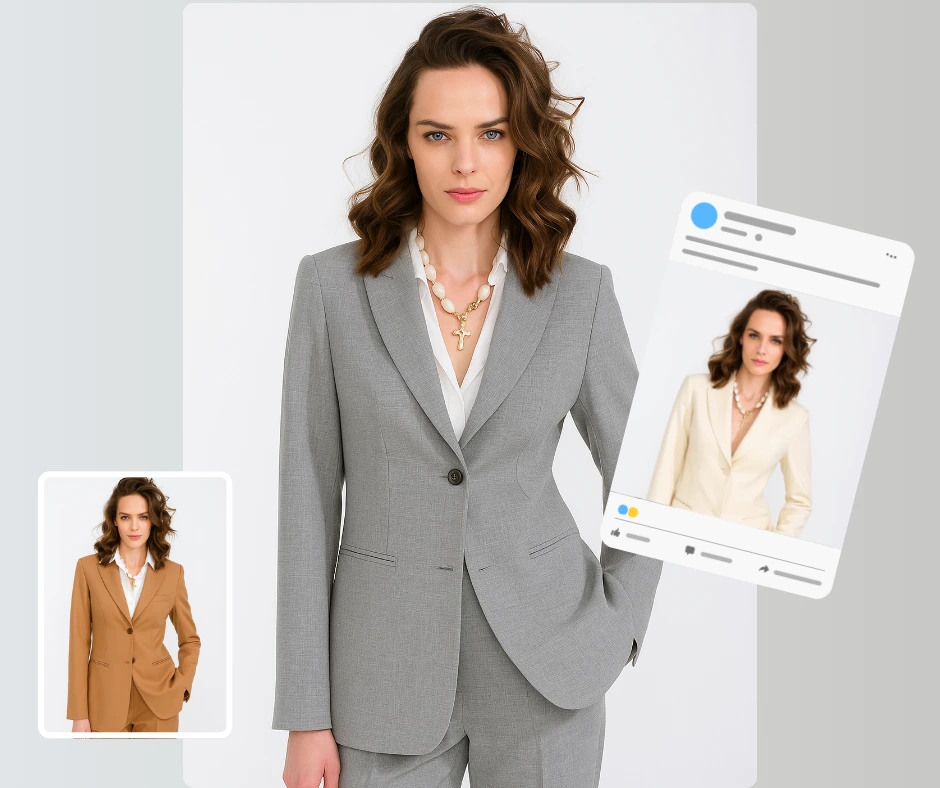
Q1: Is the AI clothes changer free to try?
Yes. Every new user receives 10 free credits, allowing you to test the tool and generate results at no cost.
Q2: Can I change clothes on group photos?
Currently, the AI clothes changer works best on individual portraits to ensure precision and quality. Group editing is under consideration for future updates.
Q3: Do I need technical skills to use this tool?
No. The tool is designed for ease of use—upload an image, describe the clothing you want to see, and PiktID takes care of the rest.
Q4: Is this suitable for commercial use?
Yes. All images created with PiktID’s AI clothes changer are royalty-free and safe to use in advertising, product pages, and other commercial contexts.
Q5: Does PiktID store my photos?
No. Privacy is a priority. Your uploaded images are not saved or reused, and are automatically deleted after processing.

